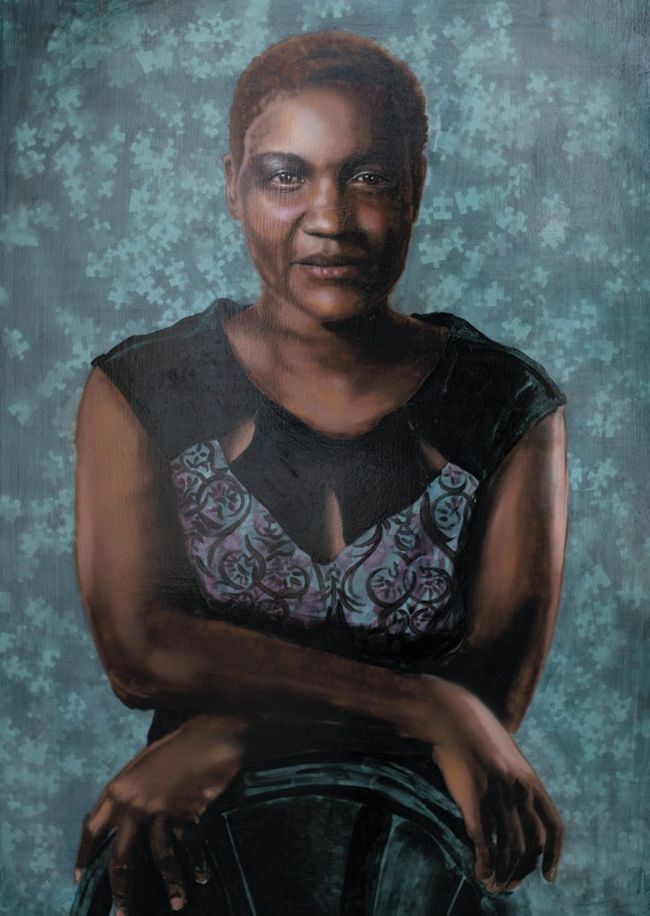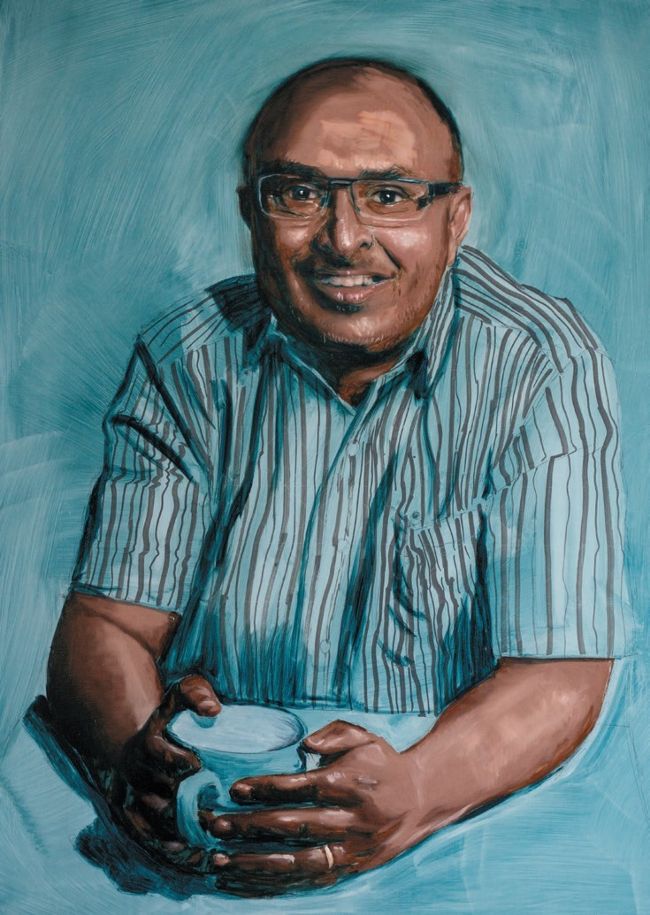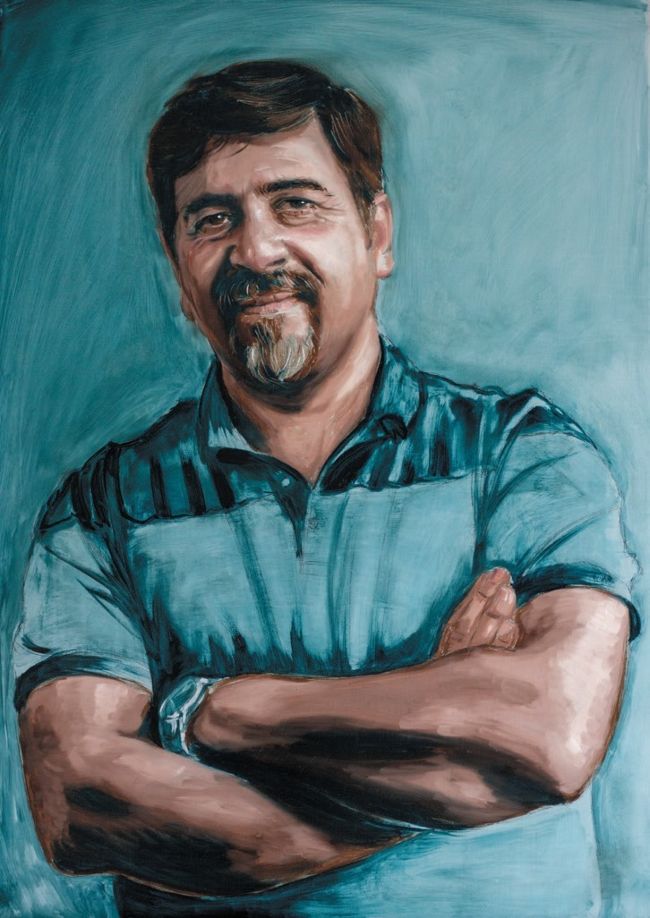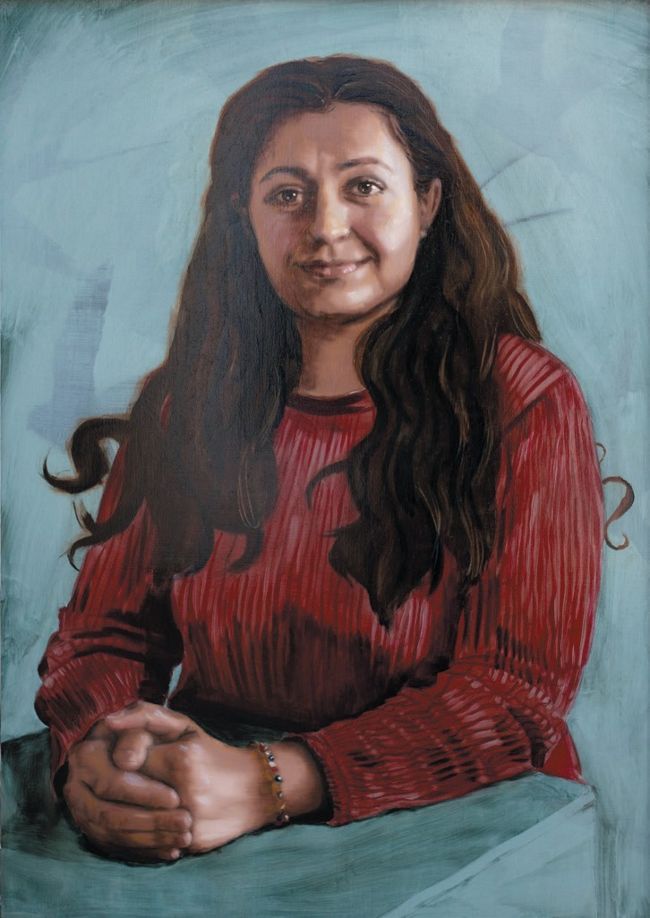’My story is also my work’
Jackie Macadam highlights the background to a new series of portraits hanging in the halls of the Royal Society of Edinburgh.
THE woman stares back at you, her face friendly but with an air of no nonsense calmness about her. Her black skin glows under the lights and her arms are folded across her knees. She is relaxed but alert. It’s a beautiful portrait – but perhaps not one you might expect to find among the venerable, mainly elderly white gentlemen whose images adorn the hallowed halls of the Royal Society of Edinburgh.
The portrait of Debora Kayembe is one of five new portraits commissioned by the Society to represent their commitment to diversity and the changing faces of the Society. A human rights lawyer in DR Congo, she was sent to eastern Congo to a territory occupied by Ugandan and Rwandese militia forces to investigate reports of massacres. She reached the conclusion that the entire war was a cover to enable the stripping of natural resources without paying any taxes. On her return to Kinshasa, she was targeted and feared for her life.
She came to the UK as a refugee, leaving her husband behind. Heavily pregnant, she arrived at Heathrow in 2005. Her English was marginal.
“I had no food, no money and for three days I starved,” she says. “I was subjected to a ten- hour interrogation – I was in bad shape – and they sent me to the hospital for five days. Then I was put on a bus to the North of England for a 12-hour road trip and my husband came months later. The asylum system is ruthless.” Over the two years she spent in England, she picked up English quickly. Her asylum case was dismissed several times.
“It had a devastating eff ect on my marriage,” she explained. “My husband left me and I was alone with two young children. I knew I needed to do my best for them and wanted to continue my career and practise law again, but I also knew I’d need to update my qualifications. “Finally I won my asylum case and with it the right to work in the UK. I applied to the Law Society in England to retrain in English law but I was not accepted. My qualifications were too diff erent. They told me though that I might be accepted for Scots law as it was diff erent and I decided to try.” Debora made the decision to leave her home in the north of England and relocate to Scotland.
“I had spent seven years training to be a lawyer in Africa. I was strong, independent and intelligent. I speak seven languages. I wanted to practise law again for peace, for freedom and for my personal dignity.” Shortly before Christmas in 2011, she moved her family to Scotland. “I sent my application to the Law Society of Scotland and waited. In the meantime I worked as an interpreter.”
Her application was accepted and she was awarded her certificate to requalify in Human Rights Law in Scotland. Since then, she’s worked with the Scottish Refugee Council campaigning for Human Rights and was invited to talk to them about her experiences. She joined the Board as a director in 2015 and celebrated their 30th anniversary at the Scottish Parliament.
“My story is also my work,” she says. In 2016 she took part in a scheme pioneered by the Royal Society of Edinburgh to highlight At Risk Refugee Academics. “I had to go for an interview there,” she said. “I was looking at this big building and got completely lost. I ended up in the gallery, looking at these portraits of eminent men. I couldn’t help wondering ‘what is this place?’
She was successfully accepted and become a member of the Young Academy Scotland/Royal Society of Edinburgh. When she was asked to sit for a portrait to hang on the walls, she was astonished. “The artist, Iain Campbell, emailed me to arrange a day to take pictures. It is such an honour.
“I didn’t really know what the portrait would look like but when the exhibition opened and I went to see it, everyone was looking at me. I couldn’t understand why but when I saw the painting it was stunning. I look so strong. So determined. He has made me stand tall against all the odds. I look serious because I am serious. It’s exactly me. I am delighted with it.” Iain Campbell was asked to do the paintings by Professor Alison Phipps, another member of the Royal Society.
He is artist in residence at Glasgow: St George’s Tron and was commissioned to do the portraits as a result of his work with the homeless, the marginalised and the outcast. His large painting, ‘Our Last Supper’ featuring thirteen guests of the Glasgow City Mission and his current work, re-imagining ‘the Gospel of Luke’ for St George’s Tron, have showcased his interest in working with these groups. His bold lines lend themselves to the intense paintings.

Debora Kayembe

Shawki Al-Dubaee

Alaa Hamdon

Pinar Aksu
“I have painted for Christian Aid, the World Council of Churches and Tearfund and done live painting at festivals like Greenbelt and Solas,” Iain said. “I was approached by Professor Alison Phipps of Glasgow University,” he explained. “She’s Professor of Languages and Intercultural Studies and UNESCO Chair in Refugee Integration through Languages and the Arts (Culture, Literacies, Inclusion and Pedagogy), an Ambassador for the Scottish Refugee Council and member of the Royal Society of Edinburgh.
“She’s passionately interested in refugees and had seen my work at the Tron. She recommended me as an Affiliate Artist for the UNESCO chair where I can work with artists who have come from all over the world. The range of work is very impressive. “Alison put me forward to do the portraits of the seven members who came here as refugees though only five were available. I work from photographs that I take of the sitters and I enjoy meeting them and hearing their stories.”
Professor Phipps is a long-standing member of the Iona Community and believes that working with refugees and asylum seekers leads to developing a ‘deep humility’ in your life.
“The project involving the refugee academics was a wonderful experience to work on and for the Society to undertake. It showcased how these newcomers to Scotland have worked hard to use their talents to highlight aspects of our system that most of us never come across and shows how very useful everyone is to our modern society.
“It is particularly exciting that these new portraits, which will be in the permanent collection are hanging among the paintings of many, mainly elderly, white men who have gone before. It’s symbolic – the dignity has been accorded to these new Scots. Space has physically been made in the room for the new, the isolated and the previously lost.”
Director of Programmes for the Royal Society of Edinburgh, Graeme Herbert said the Society was very pleased with the work. “I am delighted that these five Young Academy of Scotland members sat for portraits with Iain Campbell. The presence of the ARAR Young Academy members’ portraits in the Royal Society of Edinburgh is indicative of our ongoing commitment to recognising the great talent that exists in Scotland’s refugee and migrant communities,” he said.